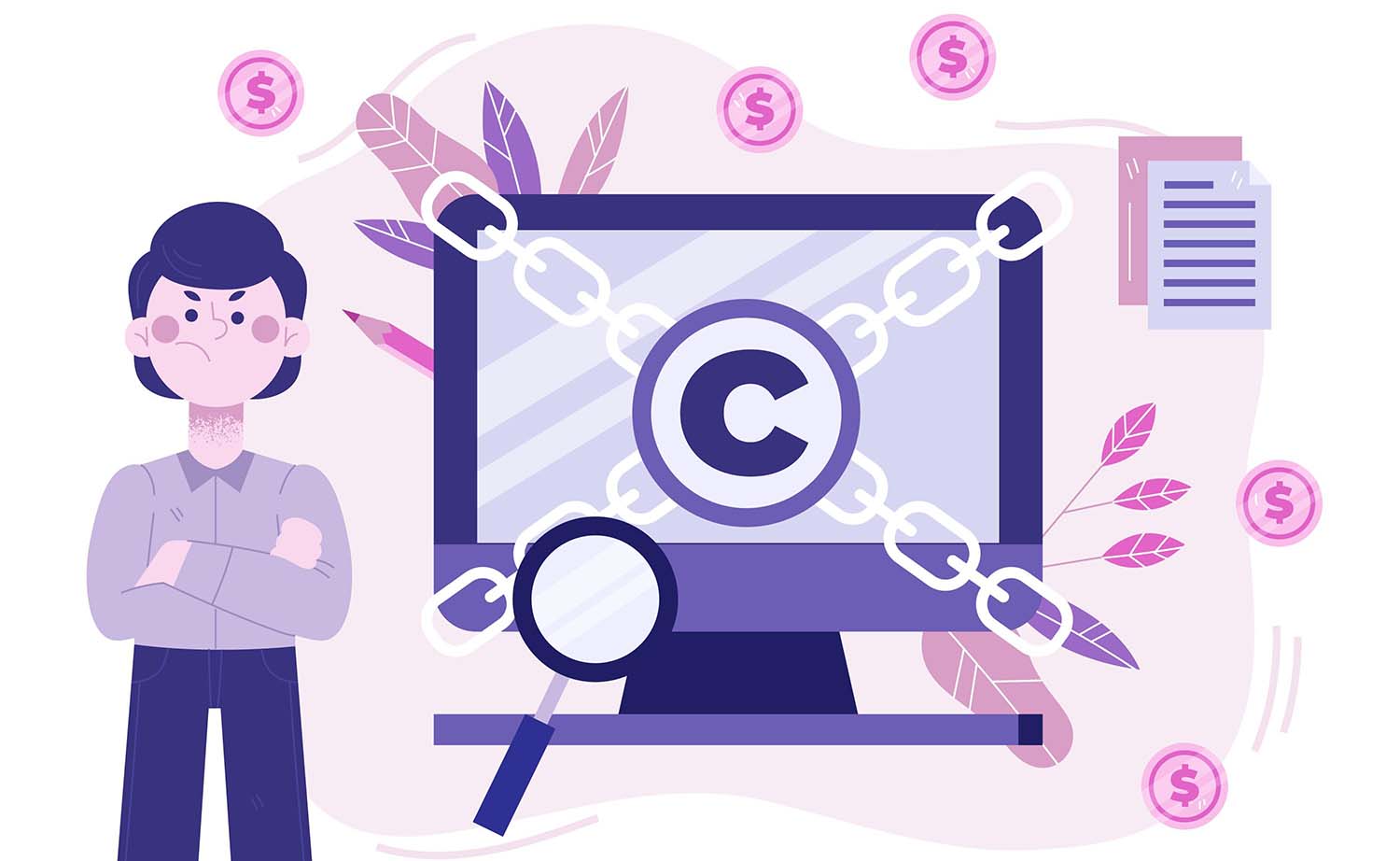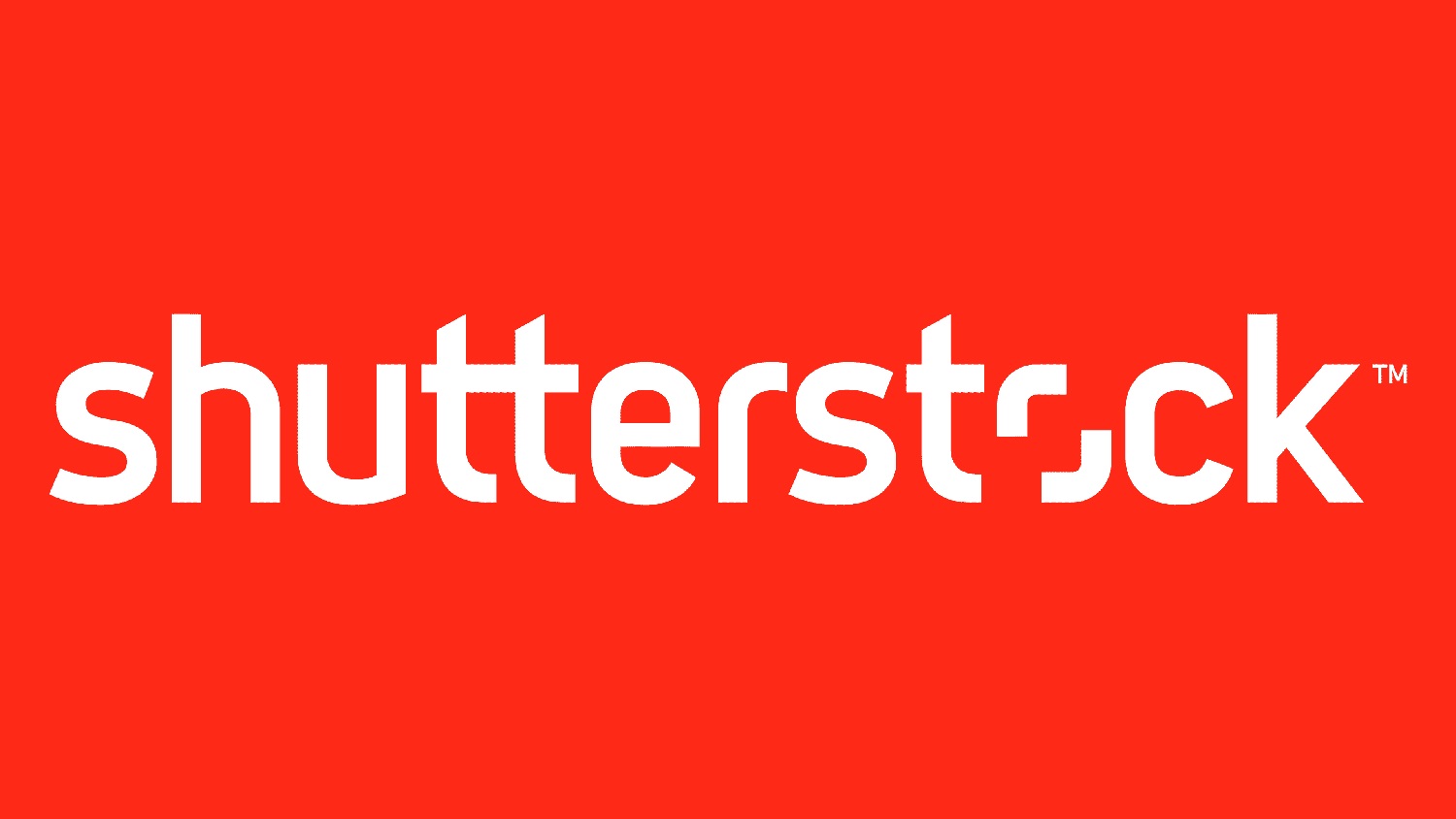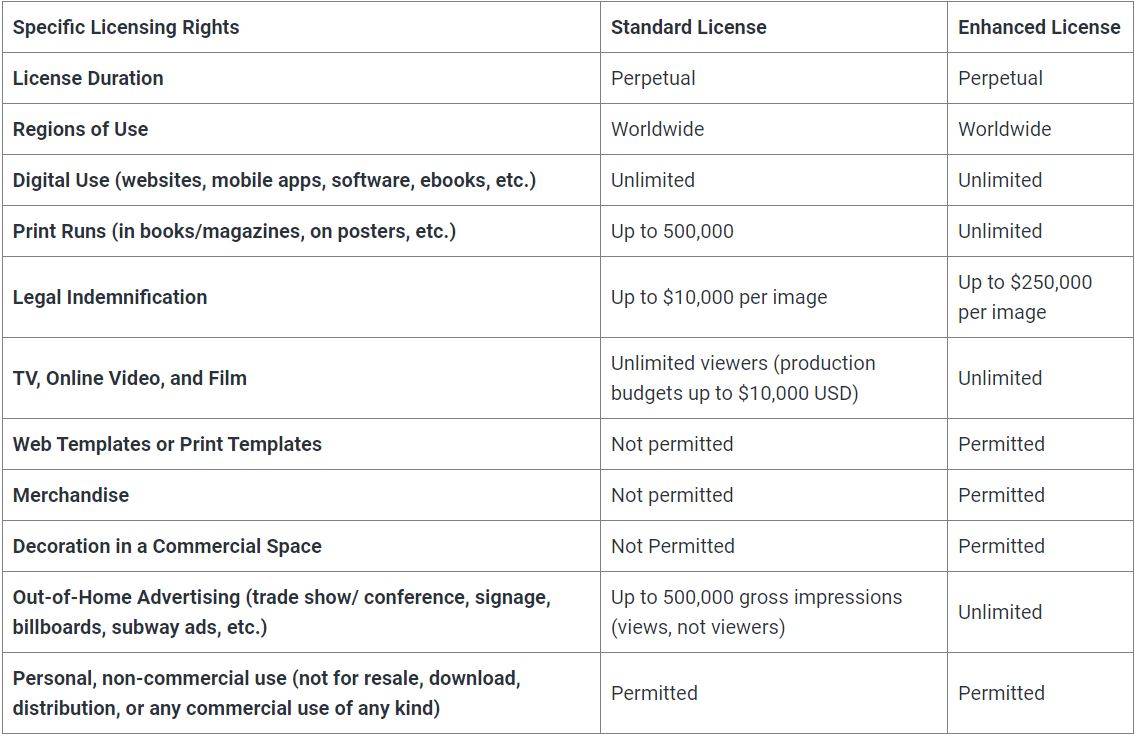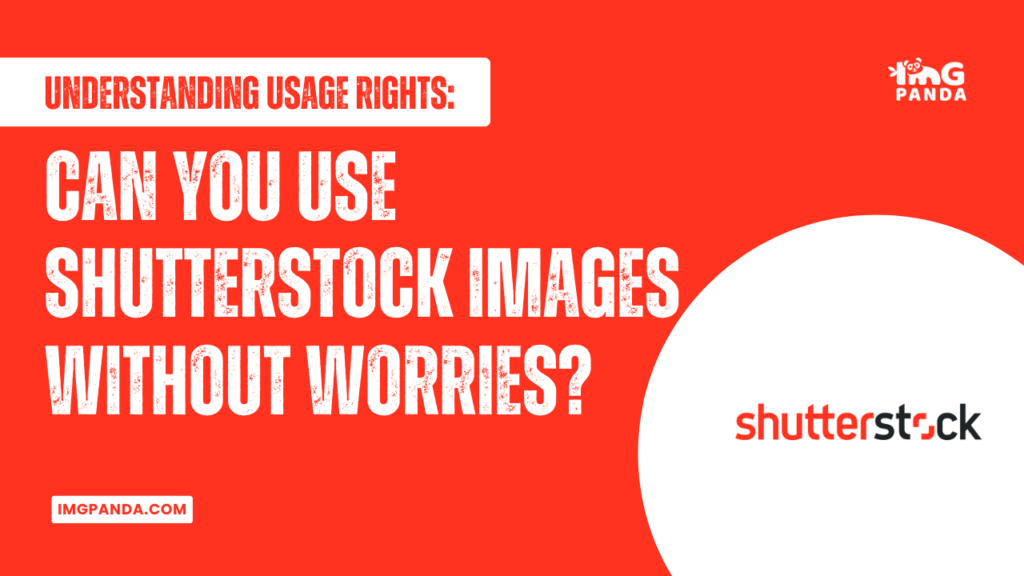In the digital age, where visuals are paramount in storytelling and communication, stock image platforms like Shutterstock have become invaluable resources for creatives worldwide. They provide a treasure trove of high-quality images ready to enhance everything from websites to marketing materials. However, navigating the usage rights associated with these images can be as crucial as choosing the right visuals themselves.
This blog post seeks to shed light on an often-misunderstood topic: Shutterstock's usage rights. Many creators wonder, "Can you use Shutterstock images without worries?" The answer lies in a nuanced understanding of licensing terms. In this post, we'll explore what usage rights entail, decipher Shutterstock's standard licensing, dive into the world of royalty-free and editorial images, and demystify extended licenses. By the end, you'll have a comprehensive grasp of Shutterstock's usage rights, allowing you to utilize its vast image library with confidence and clarity. So, let's embark on this journey to ensure your creative projects flourish within legal and ethical boundaries.
What Are Usage Rights?
Usage rights, in the context of stock images and other media, refer to the permissions and restrictions granted to users regarding how they can utilize the content they have purchased or acquired. These rights determine how you can use an image, video, or other creative assets in your projects, both in terms of the purpose and the extent to which you can use them. Understanding usage rights is essential to ensure you're using these assets legally and in compliance with the terms set by the content provider.
Here are key points to consider:
1. Types of Usage Rights
- Royalty-Free: Royalty-free images, which are commonly offered by stock photo agencies like Shutterstock, allow you to use the content for a wide range of purposes without having to pay additional royalties or fees for each use. However, there are typically restrictions on how you can use them (e.g., no reselling of the image as a standalone product).
- Editorial: Editorial images are typically used for non-commercial purposes, such as news reporting, commentary, or educational materials. They may feature recognizable people or trademarked items, and their use is often subject to more limitations.
- Extended Licenses: In some cases, you may need an extended license to use an image in ways not covered by the standard license, such as for merchandise or products for resale. Extended licenses come with additional permissions and may incur extra costs.
2. Rights and Restrictions
Usage rights specify where, how, and for what purpose you can use an image or other media. For instance, a standard royalty-free license might permit you to use an image in digital marketing materials but not in merchandise for sale. They often include restrictions like prohibiting the use of the image in explicit or defamatory content, using it to promote illegal activities, or reselling it as a standalone product.
- Attribution: Some usage rights may require you to provide proper attribution to the content creator, acknowledging their work. This is more common in Creative Commons licenses, which are often used for free and openly licensed content.
- Exclusive vs. Non-Exclusive: Content providers may offer exclusive usage rights, which mean that you're the sole licensee for a particular asset during the license period. Non-exclusive rights allow multiple users to license and use the same content.
- Duration: Usage rights are typically granted for a specific duration, whether it's a one-time use, a limited period (e.g., one year), or perpetually (unlimited use).
Understanding usage rights is crucial to avoid legal issues and ensure you're using stock images or other media assets in accordance with your project's requirements. When using stock content from platforms like Shutterstock, always review the specific terms and conditions associated with the content you're considering to ensure you're complying with the provided usage rights.
[caption id="attachment_192589" align="alignnone" width="1500"] What Are Usage Rights?[/caption]
What Are Usage Rights?[/caption]
Also Read This: Effective Strategies to Boost Your Bowling Speed in Cricket
Shutterstock's Standard Licensing
Shutterstock, one of the leading stock image providers, offers a standard licensing model that governs how users can utilize the images and media available on their platform. Here's an overview of Shutterstock's standard licensing terms:
- Multiple Uses with a Single Purchase: With a standard Shutterstock license, you can use the licensed content for a wide range of purposes within the terms and conditions specified. This includes using images in digital and print materials, websites, social media, presentations, and more. The key benefit is that you don't need to pay additional royalties for each use.
- Worldwide Usage: Shutterstock's standard license typically grants you the right to use the content globally, meaning you can use the images in projects and campaigns intended for audiences worldwide.
- Duration: The standard license provides you with perpetual usage rights. This means you can use the content indefinitely, as long as you adhere to the license terms. There's no need to renew the license for ongoing projects.
- Number of Users: The standard license allows a single user or the entity that purchased the license to use the content. If multiple individuals within an organization need access, they may require separate licenses.
- Restrictions: While the standard license is versatile, there are important restrictions to consider. These may include:
- No Reselling as a Standalone Product: You cannot resell the licensed content as a standalone product, such as selling the image itself on a stock photo platform.
- No Use in Defamatory or Harmful Content: You are prohibited from using the content in any way that is defamatory, harmful, or illegal.
- No Use in Trademarked or Brand Logo: You cannot use Shutterstock content in a way that implies endorsement, sponsorship, or association with a trademarked brand or logo.
- No Redistribution: You cannot redistribute the content to others in a manner that allows them to use it without obtaining their own license.
- Attribution: In most cases, Shutterstock's standard license does not require attribution. This means you are not obligated to credit the content creator when using the image, although it's often appreciated as good practice.
It's essential to thoroughly review the specific terms and conditions associated with each image or media asset on Shutterstock. While the standard license covers a wide range of uses, it's crucial to ensure that your intended use aligns with the license terms. If your project involves uses beyond what the standard license permits, such as merchandise for resale, you may need to consider an extended license or contact Shutterstock for clarification.
[caption id="attachment_192590" align="alignnone" width="1500"] Shutterstock's Standard Licensing[/caption]
Shutterstock's Standard Licensing[/caption]
Also Read This: How to Make Puri at Home with a Step-by-Step Guide
Understanding Royalty-Free Images
Royalty-free images are a popular licensing option offered by stock photo agencies like Shutterstock. They provide a cost-effective and flexible way to access and use high-quality images for various creative projects. Here's a deeper understanding of Royalty-free images:
1. Royalty-Free Defined:
Royalty-free refers to a licensing model where you pay a one-time fee to use an image multiple times without incurring additional charges based on usage (i.e., royalties). It offers a cost-effective way to access a wide range of visuals for your projects.
2. Versatile Usage:
With a royalty-free license, you can use the licensed image for numerous purposes, including web and print materials, advertising, social media, presentations, and more, without having to pay additional fees for each use.
3. Cost Efficiency:
Royalty-free images are generally more affordable than other licensing models, making them an attractive choice for budget-conscious individuals and businesses. The upfront fee covers most common use cases.
4. Perpetual Use:
Royalty-free licenses often grant you the right to use the image indefinitely, meaning you can use it for as long as you want without needing to renew the license.
5. Restrictions:
While Royalty-free images offer significant flexibility, they do come with certain restrictions. Common restrictions include:
- No Resale: You cannot resell the image as a standalone product. For example, you cannot sell the image itself on a stock photo platform.
- No Unauthorized Sharing: You cannot share the image with others who have not obtained their own license.
- No Use in Defamatory or Harmful Content: You cannot use the image in any way that is defamatory, harmful, or illegal.
- No Use in Trademarks or Logos: You cannot use the image in a way that suggests endorsement, sponsorship, or association with a trademarked brand or logo.
6. Attribution Requirements:
Most royalty-free licenses do not require attribution, meaning you are not obligated to credit the content creator when using the image. However, providing attribution is often considered a good practice and appreciated by creators.
7. Non-Exclusive Rights:
Royalty-free licenses are typically non-exclusive, meaning that multiple users can license and use the same image simultaneously.
8. Extended Licenses:
In some cases, if your project requires uses beyond the standard royalty-free terms (e.g., merchandise for resale), you may need to consider an extended license, which incurs additional fees but provides broader usage rights.
Royalty-free images are a convenient and cost-effective option for accessing and using visual content in a wide range of creative projects. When selecting royalty-free images, it's crucial to understand the specific terms and restrictions associated with each image and ensure that your intended use aligns with the license terms provided by the stock photo agency.
[caption id="attachment_192591" align="alignnone" width="1500"] Understanding Royalty-Free Images[/caption]
Understanding Royalty-Free Images[/caption]
Also Read This: How to Access Smart YouTube Content on OnlyFans
Navigating Editorial Use
Editorial images play a crucial role in journalism, storytelling, and content creation where accuracy and context matter. Navigating the use of editorial images, including those available on platforms like Shutterstock, requires an understanding of their unique purpose and limitations:
1. What are Editorial Images?
Editorial images are photos or visuals that depict real events, people, or places in a newsworthy, informative, or documentary context. They are used to illustrate stories, news articles, blogs, and other content where factual accuracy is essential.
2. Common Uses:
Editorial images are often used in:
- News articles: To visually represent current events or news stories.
- Features and editorials: To add context or historical relevance to an article.
- Documentary content: To depict real-life situations or locations.
- Educational materials: In textbooks or academic publications to provide visual context.
3. Licensing and Usage Restrictions:
Editorial images typically come with specific licensing and usage restrictions:
- Non-commercial Use: They are intended for non-commercial purposes, meaning you can't use them to promote a product or service.
- No Model Releases: Editorial images may not have model releases, so they can't be used for commercial endorsements.
- No Alterations: You can't modify or manipulate these images to change their context or meaning.
- Limited Resale: You can't resell editorial images as standalone products.
4. Attribution:
Shutterstock's editorial images may require proper attribution to the source or creator, similar to some Creative Commons licenses. Always check the specific licensing terms associated with the image.
5. Recognition of Public Figures:
When using editorial images that feature recognizable public figures or celebrities, consider any additional legal and privacy considerations. Some public figures may have specific rights related to their likeness.
6. Ethical Considerations:
Ethical standards are vital when using editorial images. Ensure that the image accurately represents the event or context it depicts and that it's used in a responsible and respectful manner.
7. Usage Approval:
Some platforms may require you to provide information about how you intend to use editorial images before granting access to them. This helps ensure that the images are used appropriately.
8. Rights and Permissions:
If your use of an editorial image extends beyond the standard editorial context, such as using it in commercial materials or advertisements, you may need to obtain additional rights and permissions from the people or entities depicted in the image.
9. Fair Use:
Understand the concept of "fair use" in copyright law, which allows for limited use of copyrighted material, including editorial images, without permission for purposes such as commentary, criticism, or news reporting. However, the application of fair use can be complex and may require legal advice in some cases.
When using editorial images, always respect the licensing terms and the intended context of these visuals. Ensure that your usage aligns with the ethical and legal standards associated with the depiction of real events, people, or places. If you have questions or uncertainties about using editorial images, it's advisable to seek legal counsel or consult the licensing platform for guidance.
[caption id="attachment_192592" align="alignnone" width="1500"] Navigating Editorial Use[/caption]
Navigating Editorial Use[/caption]
Also Read This: How to Upload YouTube Videos on iPhone
Exploring Extended Licenses
Extended licenses are a valuable option offered by stock photo agencies like Shutterstock for users who need more extensive rights and permissions for their projects. Here's an exploration of extended licenses and when you might consider using them:
1. Extended License Defined:
An extended license is an additional permission granted by the content provider, allowing you to use an image or media asset in ways that go beyond the standard terms of the regular (standard or royalty-free) license.
2. When to Consider an Extended License:
You might consider an extended license when your intended use falls outside the scope of the standard license. Common scenarios include:
- Merchandise for Resale: If you plan to use the image on physical products for sale, such as t-shirts, mugs, or posters.
- Unlimited Print Runs: When you need the image for print materials with a large print run, like magazines or brochures.
- Templates for Resale: If you intend to create and sell design templates (e.g., website themes, PowerPoint templates) that incorporate the image.
- Film and TV Productions: For use in films, documentaries, or television productions.
- Large-Scale Advertising: When using the image in high-visibility advertising campaigns or billboards.
- Editorial Use Beyond Standard Terms: If you want to use an editorial image for an extended period or in ways not covered by the standard editorial license.
3. Benefits of Extended Licenses:
Extended licenses provide several benefits, including:
- Broader Usage Rights: They grant you additional rights and permissions tailored to your specific project needs.
- Exclusivity: In some cases, an extended license can grant you exclusive use of the image for a defined period.
- Legal Protection: Extended licenses come with legal protection and indemnification against potential copyright claims.
- Peace of Mind: Using an extended license ensures that you're using the image within the bounds of the law and licensing terms.
4. Cost Considerations:
Extended licenses typically come with an additional cost. The price may vary depending on factors like the image's popularity, intended use, and the agency's pricing structure.
5. License Duration:
The duration of an extended license can vary, so it's important to review the specific terms associated with each image. Some extended licenses grant indefinite usage rights, while others may have a defined period.
6. Application Process:
In some cases, you may need to contact the stock photo agency directly or go through an application process to obtain an extended license, especially for exclusive use or specialized projects.
Extended licenses are a valuable tool for ensuring that you have the necessary rights and permissions to use an image or media asset in specific ways that go beyond standard licensing terms. When considering an extended license, carefully review the licensing terms, pricing, and the specific usage rights it grants to ensure it aligns with your project's requirements.
[caption id="attachment_192593" align="alignnone" width="1135"] Exploring Extended Licenses[/caption]
Exploring Extended Licenses[/caption]
Also Read This: Understanding Getty Images Licensing Fees
Tips for Worry-Free Usage
When using images from platforms like Shutterstock, adhering to licensing terms and best practices is crucial to ensure worry-free usage. Here are some tips to help you use images responsibly and within legal boundaries:
1. Read and Understand Licensing Terms:
Thoroughly read and comprehend the licensing terms associated with each image or media asset you plan to use. Licensing terms can vary, so ensure your intended use aligns with the specific license.
2. Choose the Right License:
Select the appropriate license for your project. If your use extends beyond the standard license terms, consider an extended license to ensure compliance.
3. Attribute When Required:
If the licensing terms stipulate attribution, ensure you provide the appropriate credit to the image creator. Proper attribution typically includes the creator's name and the source of the image.
4. Use Images Ethically:
Maintain ethical standards when using images. Ensure that the image's context and depiction are accurate, respectful, and align with the intended message.
5. Respect Privacy and Consent:
When using images that feature recognizable individuals, especially in commercial contexts, ensure that you have the necessary model releases and permissions to use their likeness.
6. No Unauthorized Alterations:
Do not manipulate or alter images in ways that change their original context or meaning if the licensing terms prohibit such modifications.
7. Be Aware of Trademarks and Copyrights:
Ensure that images do not include trademarked or copyrighted items or logos that might lead to legal complications. Respect the intellectual property of others.
8. Keep Records:
Maintain records of your image licenses, including the image's source, license type, and usage details. This documentation can be helpful in case of disputes or audits.
9. Use Images Consistently with Your Brand:
If you're using images for branding or marketing, ensure that they align with your brand's identity and message.
10. Stay Informed:
Stay updated on changes in copyright laws and licensing terms. Licensing terms and legal requirements can evolve, so it's essential to remain informed.
11. Seek Legal Advice When Uncertain:
If you're unsure about the usage rights, licensing terms, or legal implications of using an image, consider seeking legal counsel to avoid potential legal issues.
12. Stay Within Budget:
Ensure that the cost of licensing images aligns with your project's budget. Keep in mind that extended licenses or exclusive rights may incur additional expenses.
13. Educate Your Team:
If you're working with a team, ensure that everyone involved in your project is aware of and follows the licensing terms and best practices.
By following these tips and practicing responsible usage, you can confidently incorporate images into your creative projects without worrying about legal or ethical complications. This ensures that your projects are not only visually engaging but also compliant with licensing terms and intellectual property laws. Here's a video comparing Commercial and Editorial Photos available on Shutterstock.
Conclusion
In the world of digital content creation, utilizing stock images from platforms like Shutterstock can be a game-changer for projects of all kinds. However, ensuring worry-free usage hinges on a deep understanding of licensing terms and ethical responsibilities. This journey through understanding usage rights, Shutterstock's standard licensing, the realm of royalty-free and editorial images, and the flexibility of extended licenses has equipped you with the knowledge needed to navigate this creative landscape with confidence.
By adhering to licensing terms, respecting ethical standards, and staying informed, you can harness the power of visuals to elevate your projects while staying firmly within legal and ethical boundaries.
